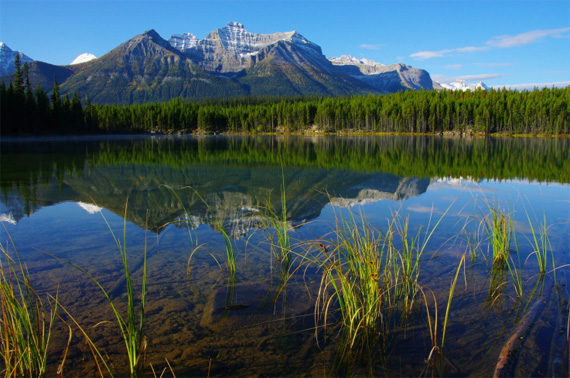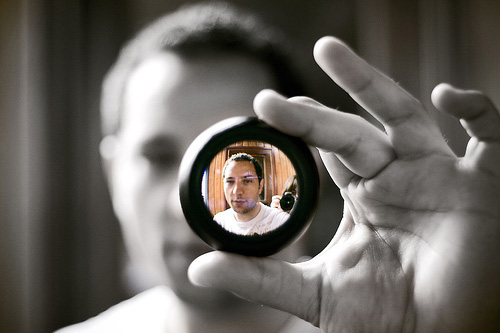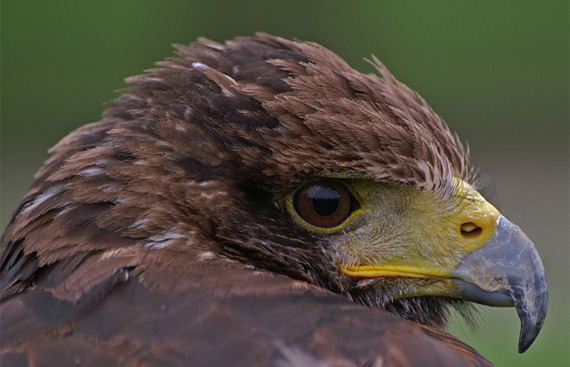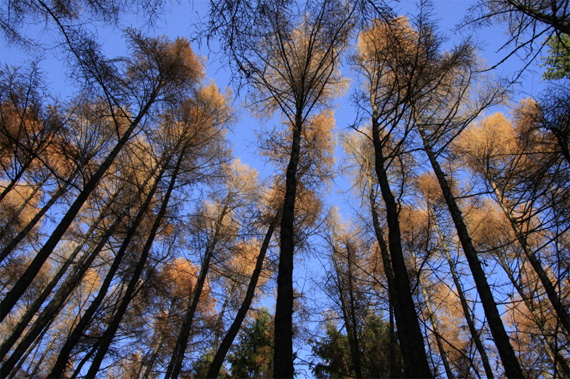Quite often when you buy your first SLR (single lens reflex) camera, it comes bundled with a lens. Some stores are flexible and will let you choose a different lens (with varying cost) to take with your camera body.
The lens is just as important as the body you choose, and it will determine the quality of your images.

“Banff Jasper Hyw. Alberta” captured by PictureSocial member Barry Giles
The aperture of the lens is important, but in terms of choosing a lens, the lower the number represents how wide the lens can open and how fast it can work. This is because the wider a lens can open, the more light can be let in and the faster an image can be taken. The aperture is represented by ‘f’ and the lower the number, the wider it gets. So, a lens that is 50mm with an f/2.8 is pretty fast. Why would you want this? It means you can take pictures quickly even when you are hand-holding the camera.
There are generally three types of lenses you can choose: Standard, Telephoto, and Wide Angle. Lenses can also be ‘fixed’ or ‘zoom’.
What does this mean?
Zoom and fixed lens
Well, a zoom lens will have two numbers, say 80 – 200mm. This means that it can take images from 80mm to 200mm (from a standard view to fairly close up). A fixed focal lens or ‘prime’ lens does not zoom in and out, but just provides one viewpoint. These lenses are often more expensive because although they do not have the flexibility of the zoom lenses, they are of higher quality and can normally take pin sharp images. However, the zoom lenses mean that you can carry one instead of three separate lenses and offer more possibilities to the average photographer.

“is life better trough the lens?” captured by PictureSocial member Alexandra Catana
Standard lens
In film format, a standard or normal lens is around 40mm to 55mm, although 50mm is the closest to how the human eye works. This makes the lens very user friendly and suitable for many situations.
Macro lens
If you want to take close up images, it is a good idea to buy a macro lens. Macro lenses of 90mm to 105mm with an aperture of f/2.8 are often a good choice. These can be great for pictures of insects or of small wildlife and plants.
Telephoto lens
The telephoto lens is a widely used choice in wildlife photography. With a telephoto lens, you can stay a fair distance back from the object you are photographing and close in on it. If you are photographing animals, quite often you do not want to disturb them or else they will run away. Additionally, if you are on safari, you cannot get too close to dangerous animals. If you are in a zoo, you often have to see animals from afar. Telephotos can be from 85mm up to 1200mm. The recommended lenses for wildlife is 300mm – 400mm for land animals and 600mm for birds (since they are often far away).

“Keeping My Eye On You” captured by PictureSocial member Phil Benton
With a telephoto lens, especially for wildlife, it can be worth spending more on a fast lens (with a low aperture number) but this can be costly. It is worth looking for a camera with the IS or VR function – ‘Image Stabilized’ or ‘Vibration Reducing’ depending on the manufacturer. This means there is less shake when taking a picture hand held (but it is better to use a tripod if you are using a long telephoto).
Wide-angle lens
Then there are wide-angle lenses, perfect for landscape. Because they can fit a lot into the picture, you can capture much of the landscape; foreground, a feature, and perhaps the sky. As they tend to have a greater depth of field, it is easier to have sharp pictures. They are also wonderful for building and architecture shots, as you can use the wide angle to give a great sense of space. They can vary from 10mm up to 35mm (but bear in mind the multiplication factor with a digital camera).
Lens accessories
There are different accessories you can purchase in order to get other effects.
There are lens hoods, which attach to the rim of your lens and provide a shade from the sun. This prevents flare: the yellow dots or beams that sometimes occur when you take a photograph with bright sun.

“trees and afternoon sun shine” captured by PictureSocial member Lubica
Filters are an inexpensive and excellent way of adding color or special effects to your images. They also protect your lens from scratches and a lot of photographers will have a clear filter ready (regardless of whether they use digital or film) to put on a lens before they dream of taking it out.
Filters can come with an adaptor, into which you can slide square-shaped filters, or in a circular form, that you can screw on top of the lens. With digital photography, the use of filters for color and enhancement is less popular because effects can be added later with digital editing software.
With film cameras, the number and types of filters are numerous; polarizing for bringing out the sky and clouds, graduated for adding color to the sky, star filters for making stars and lights shine. Companies like Cokin, Hoya, and Kood make a wide selection.
About the Author:
Article written by Sharon Cutajar from NaturalPhotography.
Go to full article: What Lens Should I Choose For Nature & Landscape Photos
What are your thoughts on this article? Join the discussion on Facebook
PictureCorrect subscribers can also learn more today with our #1 bestseller: The Photography Tutorial eBook
The post What Lens Should I Choose For Nature & Landscape Photos appeared first on PictureCorrect.
from PictureCorrect https://ift.tt/39cFAy3
via IFTTT






0 kommenttia:
Lähetä kommentti